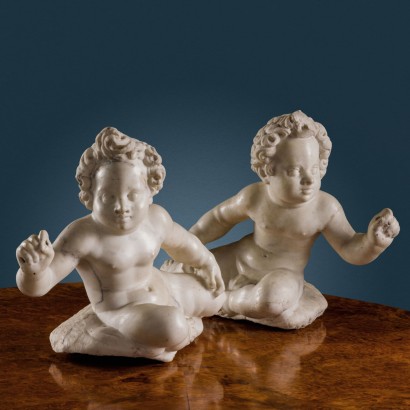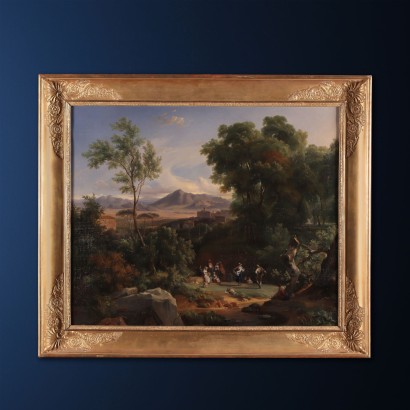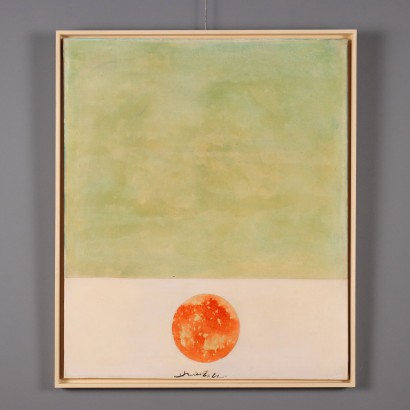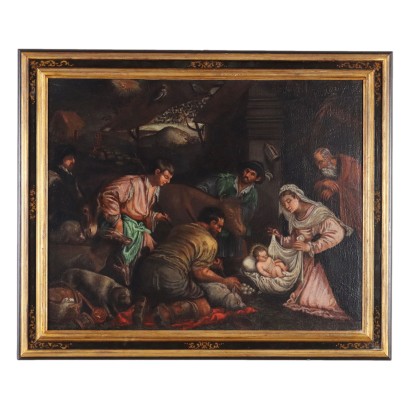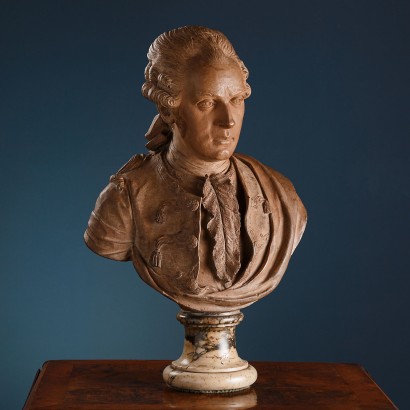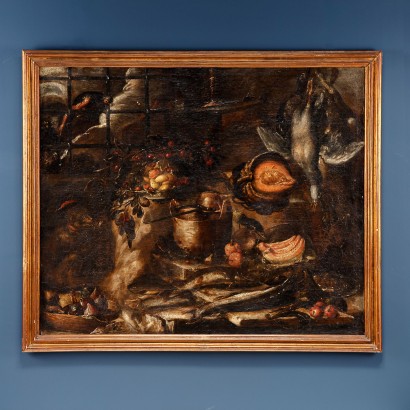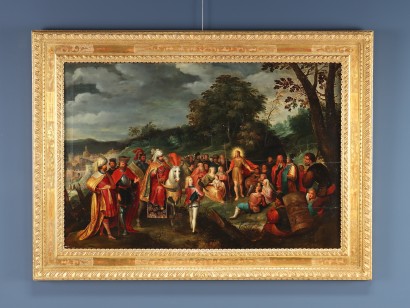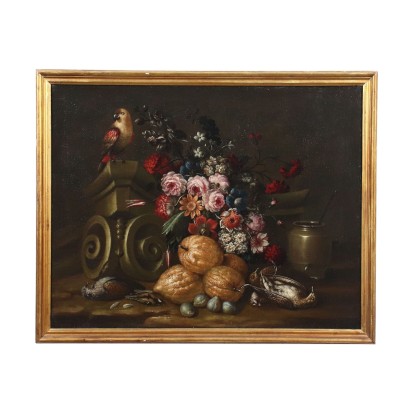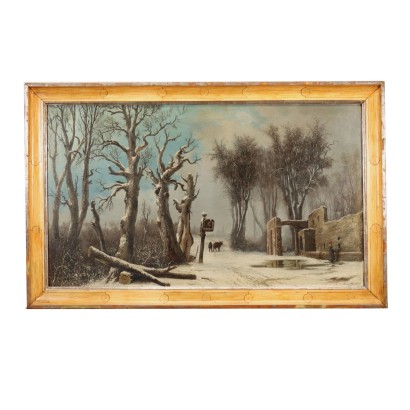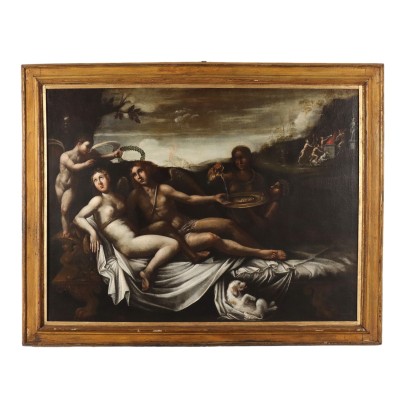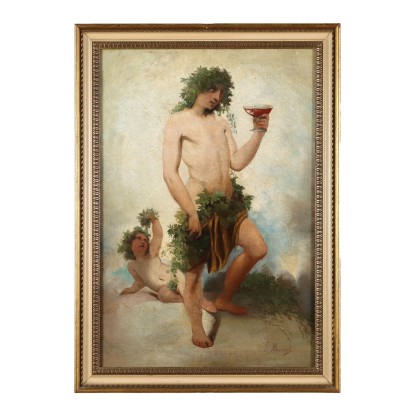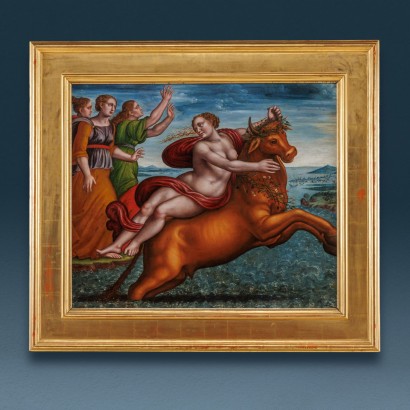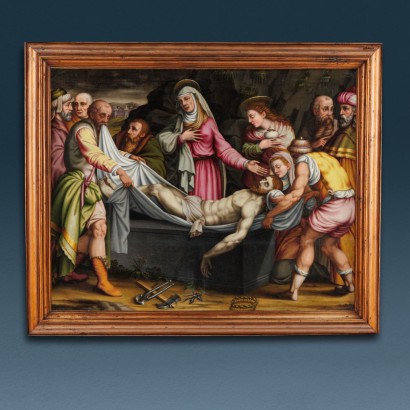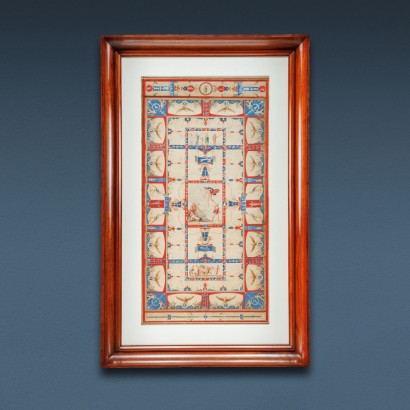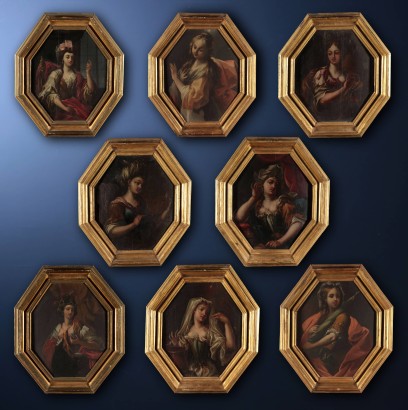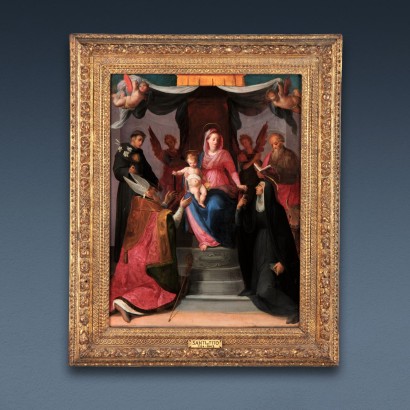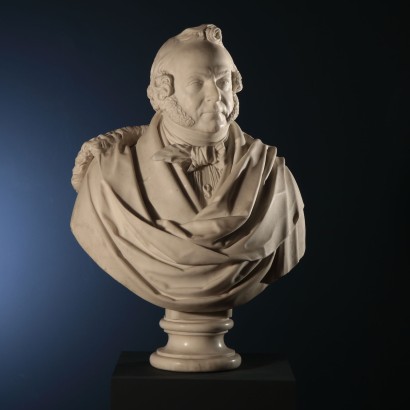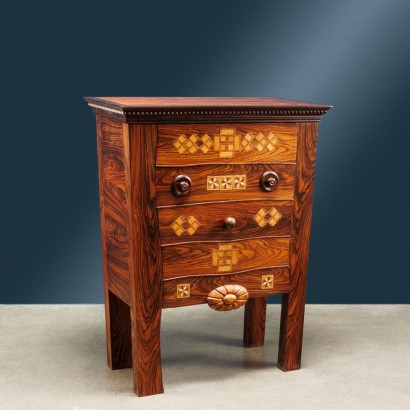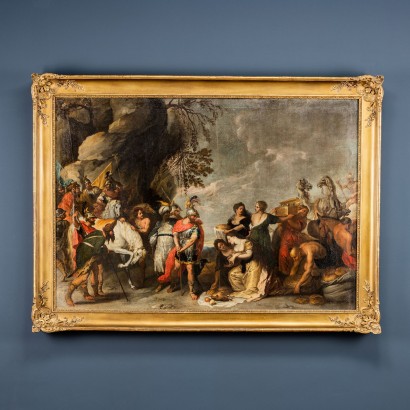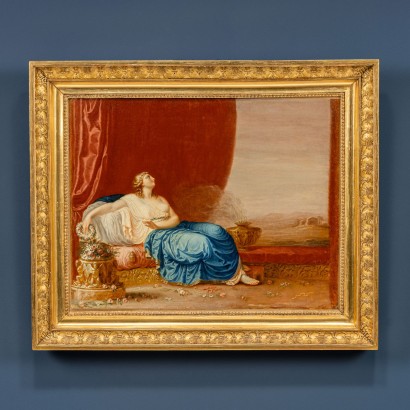ARARPI0278456
Antique Painting Workshop of Francesco Bassano Italy XVI Century
Nativity
Oil on canvas. Second half of the 16th century. The painting comes from the historical family collection of Count Castracane, as documented by the original autographed paper receipt of Francesco Bassano (attached to the work) which states: "Your Illustrious Count Castracane. Recipio de somesso sua somma de quinquaginta ducati per lo dipinto de mano mia de Nativitas Domini Nostri come Ella mhada ordenato. Dev.mo Obb.mo Servo suo Franciscus da Ponte de Bassano. Il die 12 decembre 1589". On the back of the frame there is also an inventory label at the top and the writing "proprietà Castracane" at the bottom. The aforementioned Count Castracane belongs to the noble family of Castracani degli Altelminelli di Fano, of Lucca origin. Francesco Dal Ponte da Bassano, known as Il Giovane, worked for many years in the important workshop of his father Jacopo, known as Bassano il Vecchio, before moving to Venice in 1578 where he opened his own personal atelier, while continuing to collaborate with the Bassano workshop, which was managed in the meantime by his brother Leandro after the death of his father. Towards the end of the 1580s, however, Francesco experienced a crisis that was also reflected in his allegorical production: in a progressive approach to the taste of his brother Leandro, the colour became lighter, losing strength, the forms dilated and simplified, the composition became fragmented. The production of the Bassano family was distinguished above all by sacred subjects, inserted however in rural settings, which lead to their being defined as biblical-pastoral. In this painting too, the Holy Family does not dominate the centrality of the scene, but is one of the two groups of very human figures that occupy the right part of the scene, while on the left stands out the group of shepherds with the animals of the countryside and the simple objects of everyday life. The rural context is also well defined by the surrounding objects, despite the hut of the birth being replaced by an architectural structure with marble columns, but of a colour that blends in with the other surrounding structures. The only spiritual elements are the angel - solitary! - who appears to the shepherds for the announcement, relegated to the top, small and barely hinted at; and the halo that surrounds the head of the Baby Jesus, who is also depicted peacefully asleep, unaware of what is happening around him and what awaits him. Characteristic of the production of his father's Bassano workshop were the richness and chromatic vivacity and the luminous contrasts, which however were toned down in Francesco, translating into more tenuous chromatic choices and simplified forms, losing part of their strength. This can also be seen in this work, which dates back to the last years of the artist's life, especially in the characters' clothes; note in particular how Mary's dress is no longer red as per tradition, a colour strongly symbolic of human pain, but is the same pink shade as the central shepherd's tunic, almost as if to underline the Madonna's belonging to humble and simple humanity. Moreover, Francesco Bassano in his last period, due to his health compromised by serious hypochondria (he committed suicide in 1592), received commissions for works that were only partially executed by him, but delegated at least partially to his assistants. This indicates that the work was commissioned to him and came from his workshop, as his autographed declaration states, but probably not made directly by the master, but rather by one of his collaborators. The painting has been restored and relined. It is presented in an antique wooden frame from the late 18th - early 19th century.





